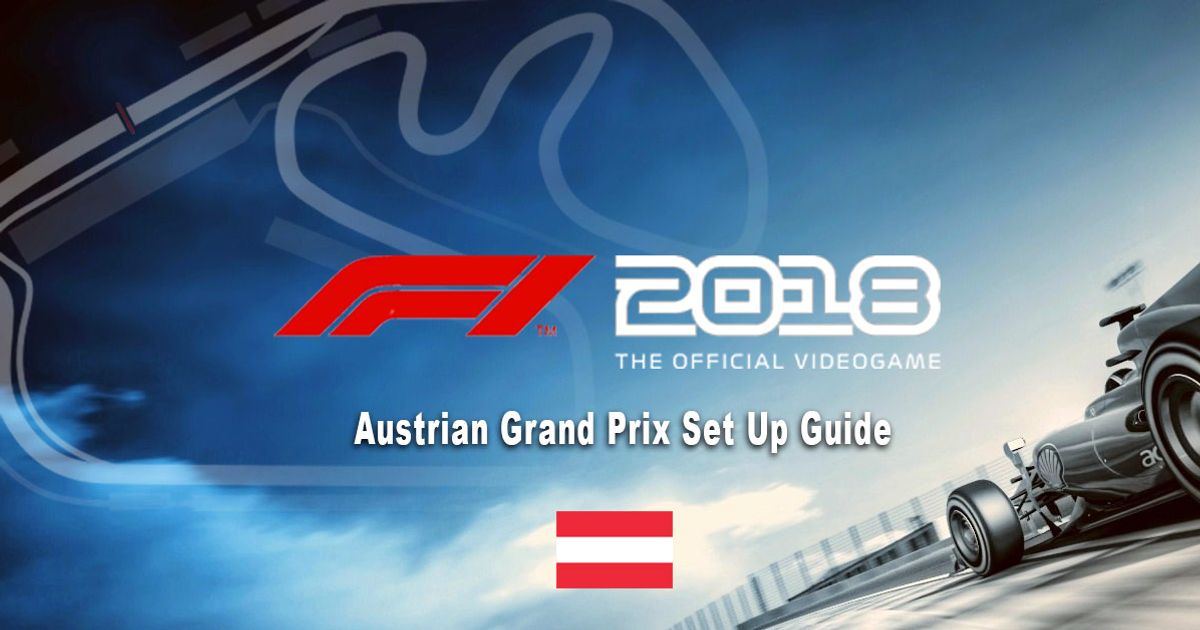The Austrian Grand Prix returned to the F1 calendar in 2014, and has seen several exciting races since then thanks to the high speeds and tight turns. There are plenty of overtaking opportunities around the Red Bull Ring, and with the lap record plunging down to a 1:03.130 this year, it's only a short blast around the circuit. That makes every tenth of a second even harder to win and all the more important. How can you maximise your car in Austria?
You can find our F1 2019 Austrian Grand Prix setup here
Aerodynamics
We are taking as much wing off the car as possible. With three long straights any reduction in drag is good, however the final sector features two fast right-handers where we do need some rear downforce to keep the car rooted as we throw it in. As a result we have gone with a 2-4 set up that makes the car as slippery as possible while still getting it into, and out of, the corners quickly.
Transmission
This part of the setup is about how you transfer the power through the rear wheels and into the tarmac. Traction is vitally important for Austria due to the number of slow corners that lead into long straights, and to find more traction we lock up the on throttle differential to 90 percent. This increases tyre wear, but it also means we can get up to speed in a hurry.
The off throttle differential is set to 80 percent, this gives us a little more stability on corner entry, though at the cost of some understeer and a marginal increase in tyre wear.
Suspension Geometry
This part of the setup is about how the wheels are aligned with the body of the car. All F1 cars are set with negative camber, that means that the top of the tyres are closer to the car than the bottom. This gives an increase in cornering grip at the cost of straight line speed. You might think that we should remove as much camber as possible here, but the final half of the Red Bull Ring does throw some mid and high-speed corners at you, and you simply need good levels of grip to get through them. As a result we have added some camber to get that grip in. Combined with the high level of traction you can fly out of these corners if you get your entry point correct.
Toe describes the horizontal alignment of the tyres. The front tyres are set to toe out, meaning the front of the tyre is further away from the car than the rear of in. This makes it more responsive on turn in. Thanks to the handful tight corners and those quick corners we need some responsiveness from the front end so we have added a touch of toe to the fronts. To counter the negative affect this has on straight line speed we are adding toe in to the rears. Taking them up to 0.41 gives us more stability in the straights and better speed overall.
Suspension
A key part of your setup, the suspension is all about how weight can transfer around the car, which affects your responsiveness and stability during braking, accelerating, and cornering.
The front suspension is set to 8 to increase responsiveness and reduce forward roll under braking, which can cause understeer. The rear suspension is at 6, which allows the weight to move back under acceleration and increases traction.
The anti-roll bars are set similarly to the suspension, this allows weight to shift laterally at the rear and lets us keep the power down while creating oversteer by not letting the front roll too much.
The ride height should be as low as possible to reduce drag down the straights. However, you end up taking a lot of kerb around the Red Bull Ring which also has a few bumps and a lot of elevation change. As a result a 4-4 ride height is about as low as we can go here.
Brakes
Stopping around the Red Bull Ring is vital, and with two downhill braking zones, including a very heavy one, you need a lot of brake pressure. We have set it to 90 percent so that the car stops without too many lockups, but this can be risky especially as the tyres wear.
The brake bias is moved rearward to 56 percent so that we can generate a little oversteer and get the nose into the tight turn 3 and the pair of downhill rights at the end of the lap.
Tyres
We have made some changes to the tyre pressures. Adding pressure to the front tyres increases their responsiveness at turn in, but also reduces their rolling resistance on the straights, giving us a better top speed. We have reduced the pressure in the rears to 21.1psi so that we get a bigger contact patch and more traction, helping us out of the slow corners at the start of the lap.
Weight Distribution
By moving the ballast rearwards to 7 we have again improve traction while adding a little oversteer to the car.
That's our setup for the Austrian Grand Prix. This provides good straight line speed and terrific agility in the final sector. It can really dominate online where most players set their car up strictly for the straights. See you on the time sheets!
Austrian Grand Prix Wet Lap Setup
Front Wing: 2
Rear Wing: 8
On Throttle: 80%
Off Throttle: 100%
Front Camber: -2.50
Rear Camber: -1.00
Front Toe: 0.05
Rear Toe: 0.20
Front Suspension: 5
Rear Suspension: 3
Front Anti-Roll Bar: 9
Rear Anti-Roll Bar: 6
Front Ride Height: 3
Rear Ride Height: 4
Brake Pressure: 82%
Front Brake Bias: 54%
Front Tyre Pressure: 23.0 psi
Rear Tyre Pressure: 21.1 psi
Ballast: 7
Explore new topics and discover content that's right for you!





